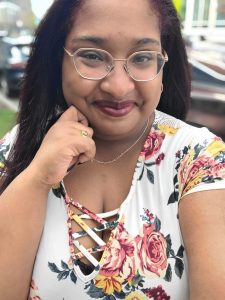Jun
17

Posted by Sarah Levin-Lederer on June 17th, 2024
Posted in: Communities of Interest, Graphic Medicine
Tags: Community of Interest, graphic medicine, Intern, Member Spotlight, resources
 Introducing Myself and My Graphic Medicine Project
Introducing Myself and My Graphic Medicine ProjectHello, NNLM R7 partners and friends!
My name is Bria, and I am a current graduate student at Southern Connecticut State University, where I am pursuing my degree in library science. I’m thrilled to share a bit about my exciting internship project with you all, and I hope you find it as inspiring and valuable as I do.
For my internship, I embarked on a mission to gather a wealth of resources on graphic medicine and compile them into one comprehensive guide. This project was initiated to support the growing interest in graphic medicine, which is an innovative field that uses comics and graphic novels to communicate medical information, share patient and caregiver experiences, and enhance understanding of health and illness. This approach is particularly effective in improving health literacy and fostering empathy, making it a valuable tool for both healthcare professionals and the general public.
The goal of my project was to create a centralized resource that includes:
One of the highlights of this project was the outreach process. I reached out to various groups and professionals in different fields, including public librarians, academic and health science librarians, and academics. I found it incredibly exciting to connect with so many accomplished individuals who are passionate about graphic medicine. The enthusiasm and support I received were truly inspiring, and it was amazing to see how many people love this idea and want to contribute to it.
The responses I received were overwhelmingly positive, and I was able to gather a rich array of resources and insights. Many contributors shared their own LibGuides, collection development strategies, and programming ideas, which greatly enriched the resource guide I was creating. It was also a joy to learn about the various graphic medicine initiatives already underway in different communities and institutions. This experience has deepened my appreciation for the collaborative spirit of the library and healthcare communities.
One of the challenges I faced was deciding on the best format for the Resource Guide. As a creative person, having the freedom to design the guide was both exciting and overwhelming. I had so many ideas for how to organize and present the information, and narrowing down the options to settle on one cohesive format was definitely a bit of a struggle. However, this challenge also provided a valuable learning experience in project management and decision-making.
Additionally, the sheer volume of resources and information I gathered was sometimes daunting. Sorting through all the materials, determining what to include, and ensuring that the guide was both comprehensive and user-friendly required a lot of careful thought and organization. Despite these challenges, I’m proud of the final product and believe it will be a valuable tool for anyone interested in graphic medicine.
If someone else wanted to take on a similar project, here’s what they should know:
Thank you all for your support and for being such a welcoming community. I look forward to seeing how these resources will be used to further the amazing work being done in graphic medicine. This project has been a wonderful learning experience, and I’m excited to continue exploring the possibilities of graphic medicine in promoting health literacy and empathy.
This project was originally proposed by the R7 Graphic Medicine COI and we appreciate them sharing their resources with Bria to help her create this document.
Bria’s resource list, combined with additional resources and information, will be turned into a full resource guide on the NNLM website coming late summer.